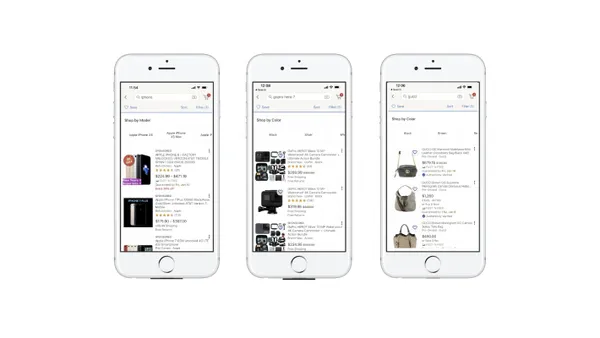Omnichannel retailing has become the gold standard for success in the retail environment, providing a seamless, continuous customer experience across any device or location. Retailers recognize the need to bridge the gap between a customer’s online and in-store experience, collecting data that reveals the full shopping path. Retail technologies are striving to generate data points in the physical world that mimic the key performance indicators found in e-commerce, such as page visits (store and department traffic), time on site (shopper duration) and exit pages (customer journey analysis) using video-based sensors, IoT lighting, BLE beacons or Wi-Fi tracking.
In pursuit of seeking the best technology, retailers should not only consider its ability to solve a problem, but also the technology’s effect on corporate reputation, employees and customers – a few of the areas of concern for Wi-Fi tracking technology. In recent years, media and lawsuits have shed light on the inherent downsides of tracking customers’ cell phones in stores.
When customers carry phones with Wi-Fi turned on, their presence can be tracked, even if they are not connected to a network. Each Wi-Fi enabled device broadcasts its MAC address, a unique identifier for that device, that can be detected by a tracker device or standard off-the-shelf Wi-Fi access point. Retailers can measure how many people pass by the store, how many enter, and track their journey within the store.
Counting Customers
To address privacy issues, Apple added a MAC randomization feature to iOS v8, installed on iPhone 4s and iPad 2 and newer devices. Android also added MAC randomization starting at Android v6. Using this feature, phones will randomly change MAC addresses, some as many as 20 times in a 40 minute shopping session. As a customer enters the store, their Wi-Fi device is detected and recognized as one new customer. However, as the MAC address is changed by their device, the tracker device or access point will recognize the same person as multiple new customers, inflating the customer-count statistic and producing an ineffective data set for retailers.
More accurate metrics can be derived from devices without MAC randomization; however, those are older devices and represent a bias on the population sampled as younger people are less likely to have older phones. More accurate metrics are also derived when a customer connects to a store’s Wi-Fi network, however only 10% of customers on average connect to in-store Wi-Fi networks. While Wi-Fi tracking does offer a solution to count customers, it is not nearly as accurate or consistent as other counting technology and retailers are at the mercy of how cell phone manufacturers choose to broadcast a phone’s unique identifier.
Customer Journey Analysis
The selling point of Wi-Fi tracking for customer journey analysis is that this technology requires less hardware and infrastructure compared to hardwiring video-based sensors throughout a store’s interior. Customer journey can be measured using a heatmap that is derived from triangulating devices over time based on changes in Wi-Fi signal strength between the devices and multiple access points throughout a store. Ideally, retailers rely on the heatmap to signal areas of interest and disinterest to inform decisions such as store layouts, merchandising, and signage placement. However, the location accuracy cannot consistently exceed more than 20 to 25 square meters, which is not granular enough to understand shopper behavior by aisle or product fixture.
Privacy
The most notable concern with Wi-Fi tracking is privacy. Its legality is a grey area as privacy laws can’t keep up with ever changing technologies. Companies selling Wi-Fi tracking services claim MAC addresses aren’t personally identifiable information, but regulators in the US and EU have hinted that they consider this data to be personally identifiable.
Customers have raised their concern not only with the technique, but that their information is being collected without consent and many are not even aware that it’s occurring. As an OpinionLab survey of 1,000 consumers indicated, “8 out of 10 shoppers do not want stores to track their movements via smartphone” and “nearly half (43%) of shoppers are less likely to shop at a favorite retailer if the brand implements a tracking program.”
According to a 2015 Federal Trade Commission press release, “Nomi Technologies, a company whose technology allows retailers to track consumers’ movements through their stores, agreed to settle Federal Trade Commission charges that it misled consumers with promises that it would provide an in-store mechanism for consumers to opt out of tracking and that consumers would be informed when locations were using Nomi’s tracking services.”
Even if MAC addresses aren’t considered personally identifiable information and the data is anonymized, many customers are still uncomfortable with the idea of a retailer collecting data from their smartphone without consent.
Children’s Privacy
Moreover, maintaining children’s digital privacy is of utmost concern and a hot topic as of late as the FTC cracks down on violations to the Children’s Online Privacy Protection Rule, COPPA. In 2018, TikTok, a lip-syncing social media app, agreed to pay $5.7 million to settle FTC allegations that it collected information from children under 13. In 2019, Google agreed to pay as much as $200 million to settle claims with FTC that YouTube violated children’s privacy laws. Both cases violated, COPPA, which imposes certain requirements on operators of websites or online services directed to children under 13 years of age.
A 2019 survey found 53% of children in the United States own a smartphone by age 11. Retailers tracking smartphones are likely tracking phones of children. While this isn’t a current violation of COPPA, the FTC is continually revising its rules to keep up with technologies. Should the FTC deem MAC addresses as personally identifiable information, then retailers may be in violation. One area COPPA applies is if “Your website or online service is directed to a general audience, but you have actual knowledge that you collect personal information from children under 13.” Where “website or online service” includes “internet-enabled location-based services”. It’s important to consider how implementing Wi-Fi tracking technology will play out in its lifetime.
Beneficial Uses
Wi-Fi analytics can provide beneficial data to retailers if certain conditions are met and expectations are realistic. Wi-Fi trackers and access points are beginning to allow anonymization of MAC address information which may help protect retailers against future decisions of regulators in the US and EU, especially as it relates to COPPA and GDPR compliance. This can inhibit the measurement of repeat customers; however, it could protect the retailers from costly litigation and fines.
There are two data sets available from Wi-Fi trackers which are not affected by MAC randomization and are therefore more promising uses of the technology. These include passer-by traffic counts and occupancy measurement.
As a person passes by the entrance to a store the chance of their device changing the MAC address it broadcasts is significantly less than in-store customers, which makes the metric much more accurate than in-store customer counts. Calculating the occupancy of a store doesn’t rely on uniquely identifying devices, but rather simply counts the number of devices which can be determined to be inside the store based on triangulation. This makes the data immune to MAC randomization.
Summary
While the promise of Wi-Fi analytics as a highly accurate technology to produce Internet metrics for in-store customers and replace existing sensors has not lived up to the hype and can potentially get retailers into gray legal areas, it does still have real potential as an addition to existing sensing technologies retailers have already installed.










